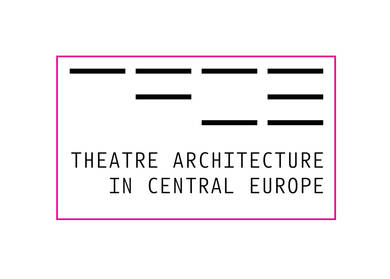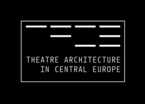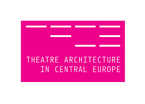
Theatre architecture presents a specific phenomenon in European cultural heritage.
Theatre buildings represent distinct demonstration of the art of building in its style changes from late Renaissance to present day; their construction and space solutions reflected the period interpretation practice as well as it influenced it. It also bears witness to social relationships and its changes. The equipment of the theatre on the other hand represents the history of technology.
Unlike the buildings for other purposes (cathedrals, mansions, castles, fortifications) we lack the documentation of theatre buildings and their inclusion into a wider geographical context. However, such an extensive treatment would be important not only for research in various fields, but also for the contemporary theatre practice; international co-operation of artists plays an even more important role in theatre practice today and it is important that the contemporary theatre-makers have available detailed and clear information about the conditions in which they can realise their ideas. It is certain that clear and accessible information will appeal also to wider public.
The main aim of the project is to present existing knowledge and information about the development of theatre architecture in central Europe by means of complex structure of various forms. Partial development tendencies in individual regions will be put into context and wider European perspective thanks to co-operation of important documentation and research institutions from five European countries. By sharing and presenting information about common cultural heritage of European importance, their use by professionals as well as by wider European public will be strengthened. Special attention will also be paid to educational use of the project, when some of its activities will be directly targeted at students and teachers of specialist and art schools as well as at educational institutions of primary and secondary level. Long-term continuance of the project will be secured by the central part of the project – creation of methodology for describing theatre architecture, and implementing functional structure and environment that will allow for further treatment, updating and expanding databases and information.
The database of technical parameters of stages and buildings, which is greatly missed on international level, will provide active theatre-makers with necessary spaces and contacts, and will become a tool for art management and support of mobility of artists as well as theatre technicians (light or sound designers, acoustics specialists and architects etc.)


What are the aims of the project and how to achieve them?
1) Preservation, protection and promotion of European cultural heritage – work with information is the core and essential prerequisite of successful preservation of monuments. Register, description and collection of information about theatre architecture in a database widely available this prerequisite accomplishes.
2) Presentation of European cultural heritage in an attractive and varied way – books, exhibitions, presentations. All these products use modern technologies (CD/DVD ROM, internet, and database).
3) Creation of a system for registration and presentation of buildings (theatre architecture) that is managed on highly professional (through co-operation with top European experts in the field of theatre architecture) and technical (selection of the contractors) level.
4) Support of artists’ mobility is made easy by making the database of technical parameters available. It means an easy finding of a suitable space for artistic presentation. This part of the database is, to a certain extent, independent, and includes a large number of stages; its use is offered to a large quantity of theatres.
5) Support of education – all planned activities were used for general, specialised as well as art schools, and their aim was to increase knowledge about European cultural heritage; specialised workshop then trained (future) European specialists in the field of theatre architecture so they would be well prepared for work in this field and would be aware of various approaches and possible solutions in other countries.
6) Support of communication between specialists on an European level – the project has been realized as an international team work and we suppose that the established contacts will encourage follow-up co-operation as well.




